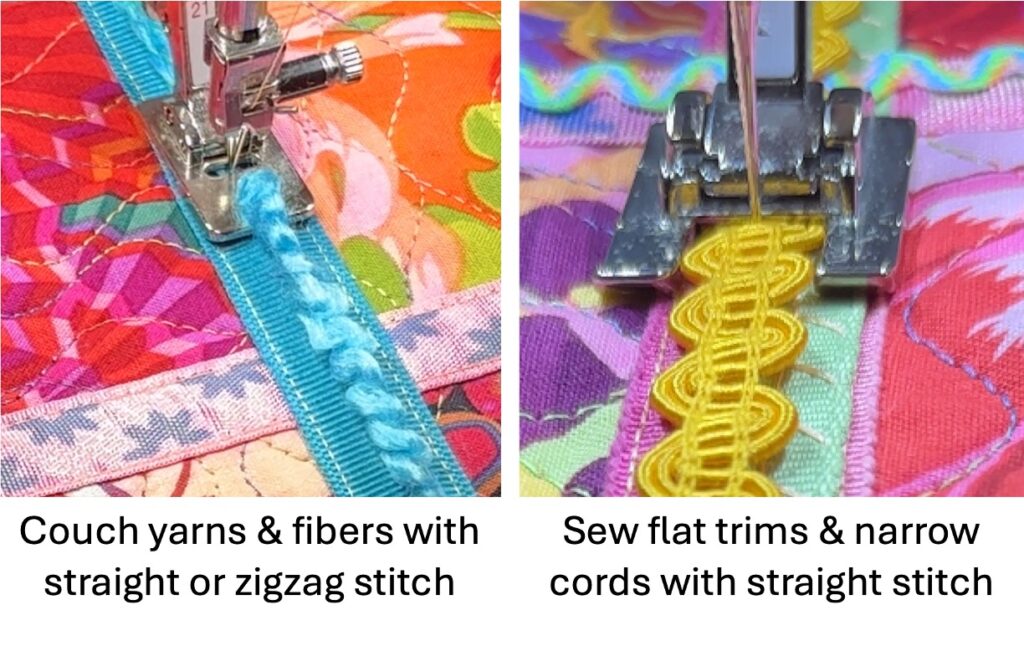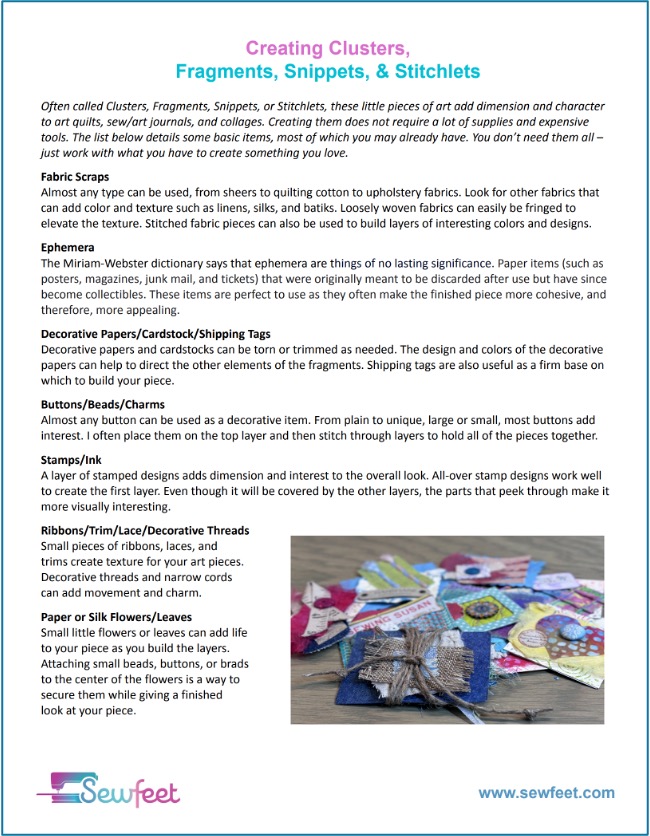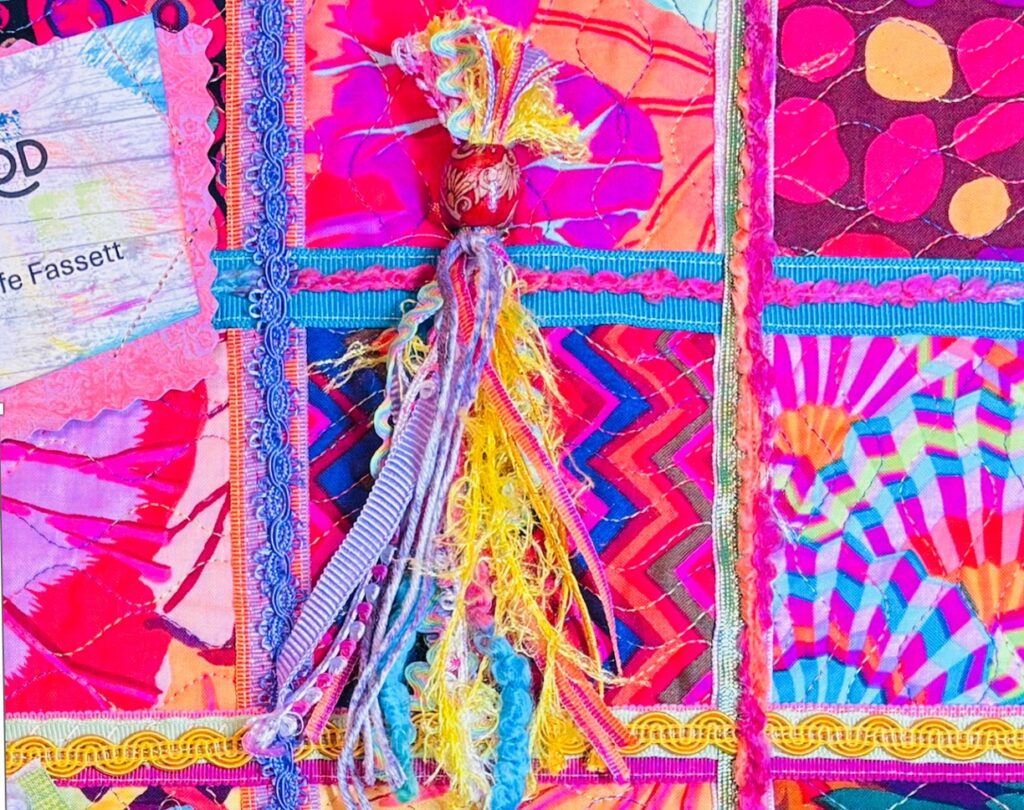I am drawn to Kaffe Fasset fabrics because of the complex patterns and vibrant colors (as are many sewers). But when I have used his fabrics before, I’ve always looked for one or more solids to calm things down a bit. But this time, not only am I not adding solids, I decided to bring more color and texture to the party! I stitched 16 quilted squares together and then embellished the quilt with a variety of ribbons, laces, and trims that add to the “chaos” and color. Then, I added clusters to make the quilt more interesting
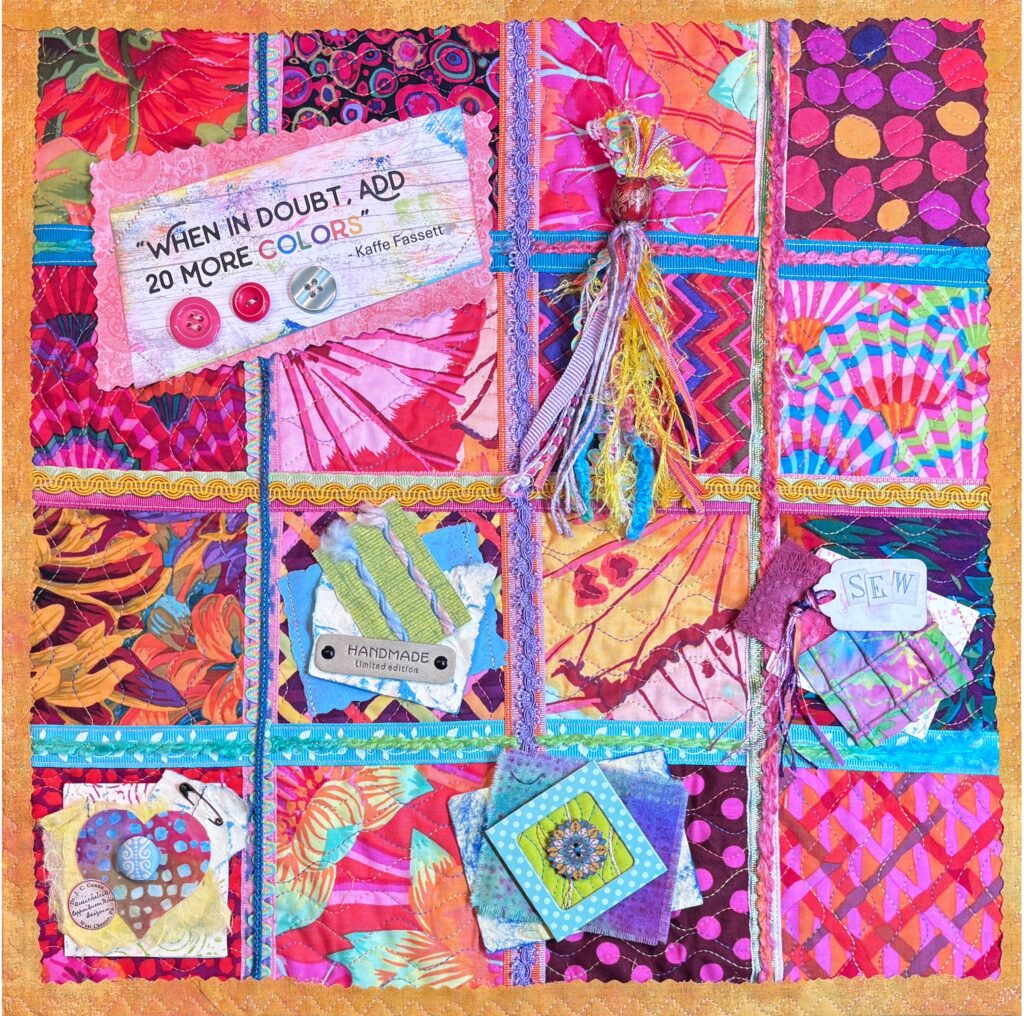
Kaffe designs fabric collections for Free Spirit, and I started with a charm pack of 5” squares. Selecting sixteen squares from the pack to use for the quilt was much easier than I thought it would be. It turns out that all of the colorful squares look great together! I just selected the ones that I liked the most and started sewing! I used my favorite quilt-as-you-go technique, quilting each block before joining them together.The finished size is 16″ x 16″, a good size for a small wall hanging.
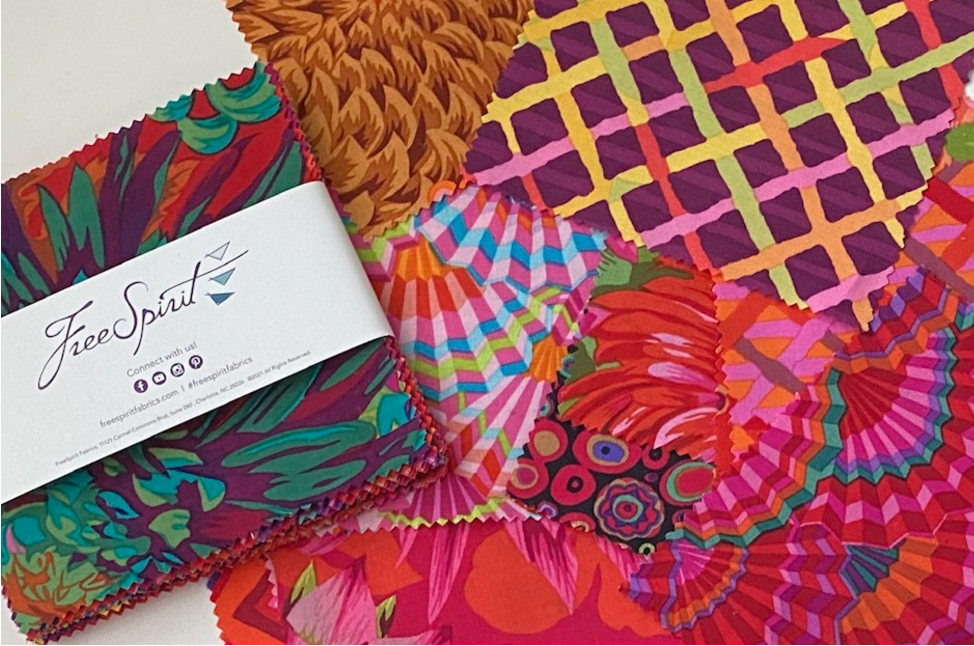 Supplies
Supplies
- Sixteen 5″ squares of Kaffe Fasset fabrics
- Sixteen 5″ squares of low loft batting
- Backing fabric, 18” x 18” – I did not have any Kaffe fabric pieces large enough so I used another favorite fabric, Grunge by Moda, in a red color that somewhat coordinates with the 5″ squares. Because this is a small wall hanging, the back will be against the wall and rarely seen.
- Four binding strips, 1 ¼” x 18″ – I used another Grunge fabric by Moda in a gold color that coordinates with the quilt top. Also, I used scrap fabric for the binding so I had to piece them together to make each strip 18″ long
- Six assorted ribbons, each ½”- ⅝” x 18”
- Twelve to eighteen assorted narrow trims, ribbons, yarns, and laces, 18” each
- Three decorative buttons
- Thread of choice – I used a variegated polyester embroidery thread
- Optional: Temporary spray adhesive
- Optional: I used a decorative edge cutter for one edge of each binding strip
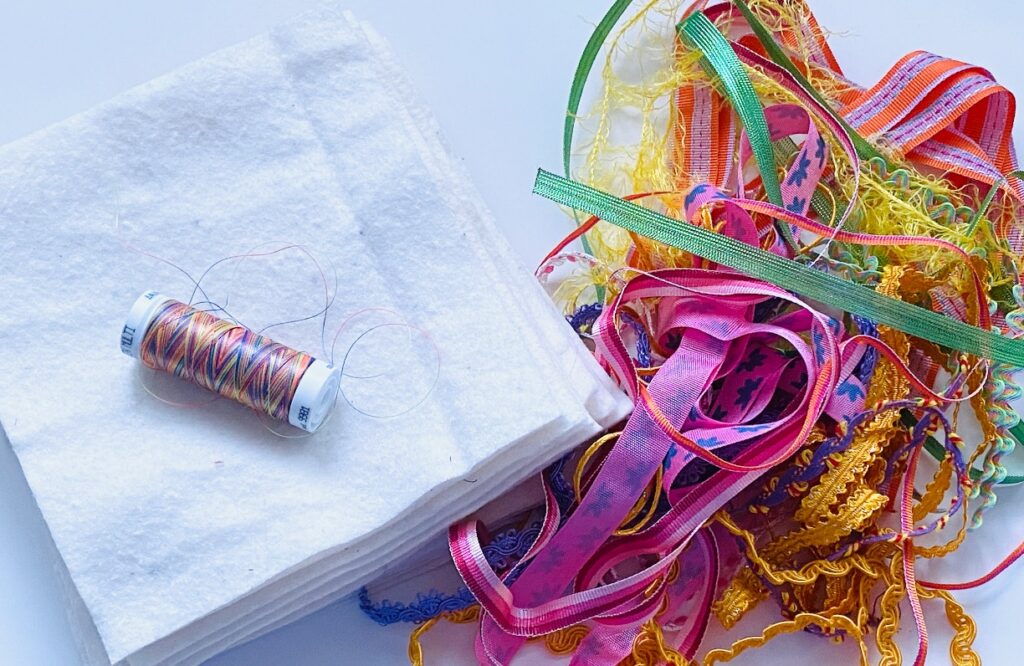
Quilted Squares
Place a square of batting behind a square of fabric. Quilt the square as desired. I used a serpentine stitch and randomly stitched across the fabric square. Trim the quilted square to 4” x 4”.
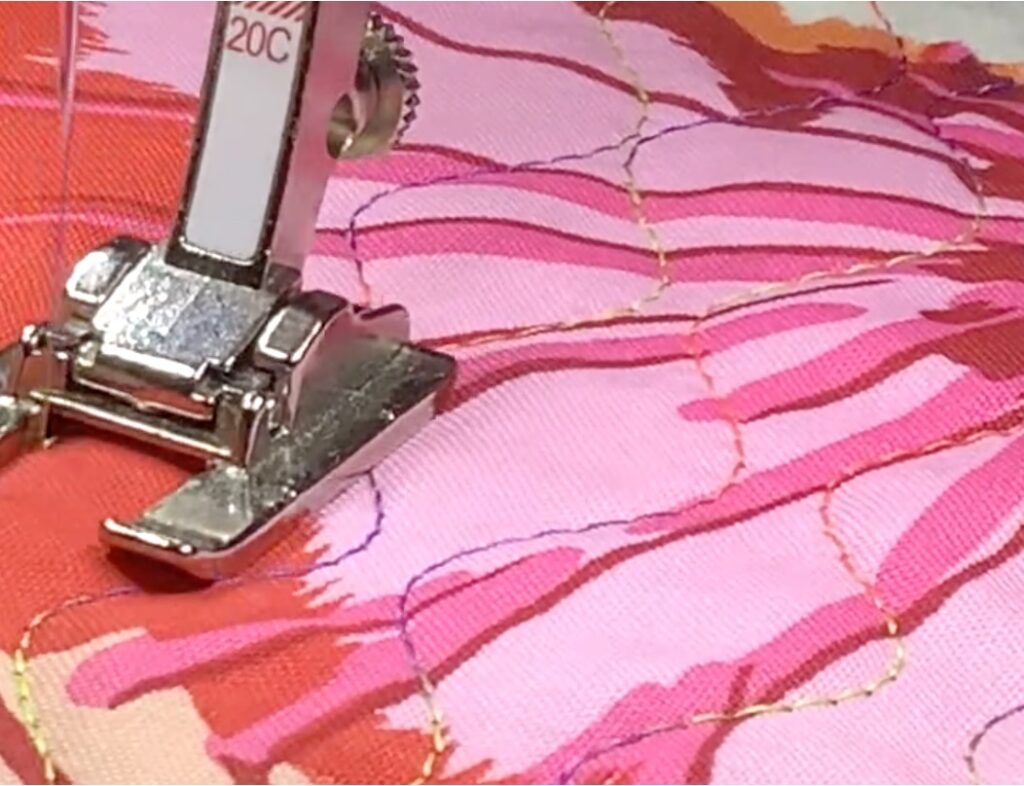
Repeat the quilting and trimming with the remaining fifteen squares.
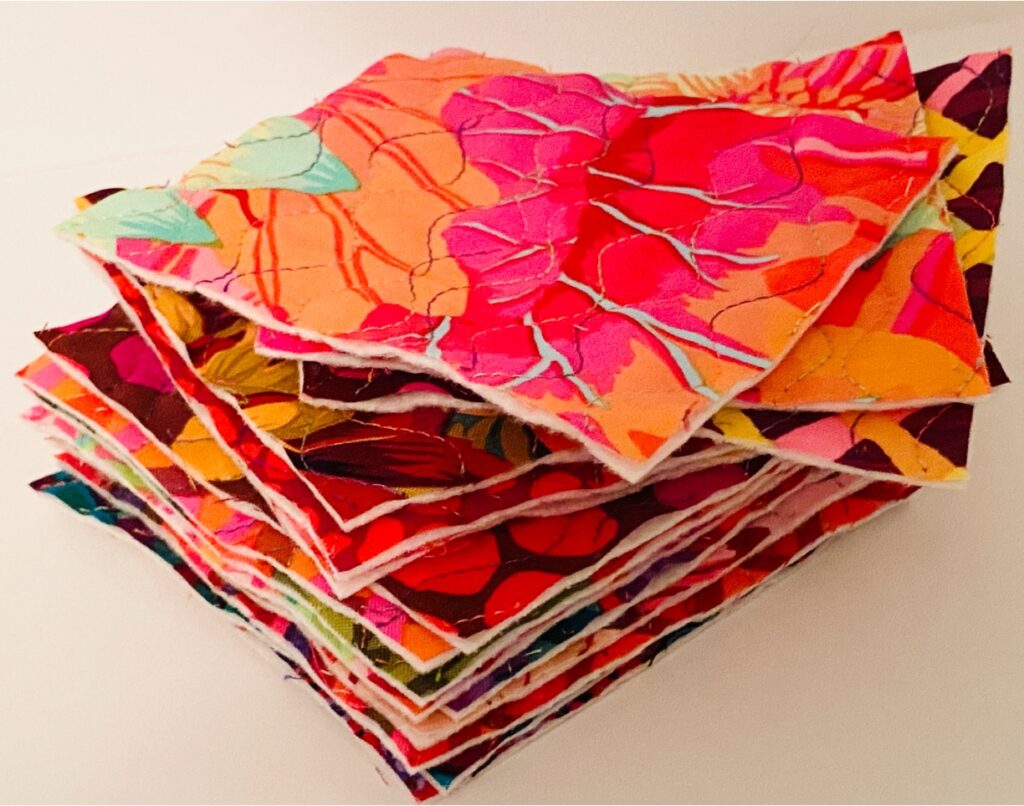
Joining the Squares
Using an edgestitch presser foot, place two squares edge-to-edge and select the zigzag stitch. Sew the squares together. The center blade of the foot keeps the edges of the block from overlapping as you stitch. I randomly placed the squares and paid no attention to the direction of the quilting.
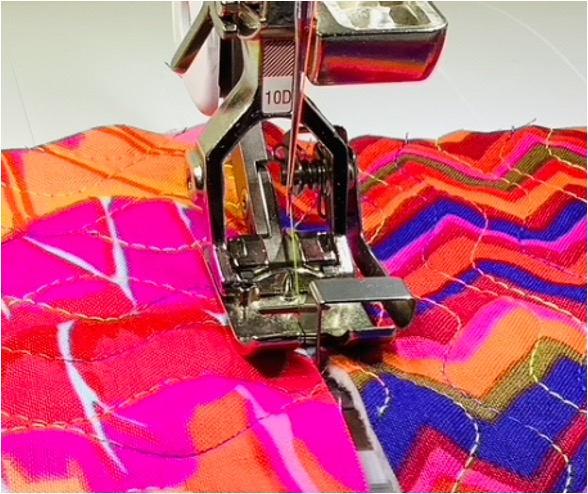
Continue joining squares until you have 4 rows of 4 squares. Join the rows to make the quilt top and square it up if needed.
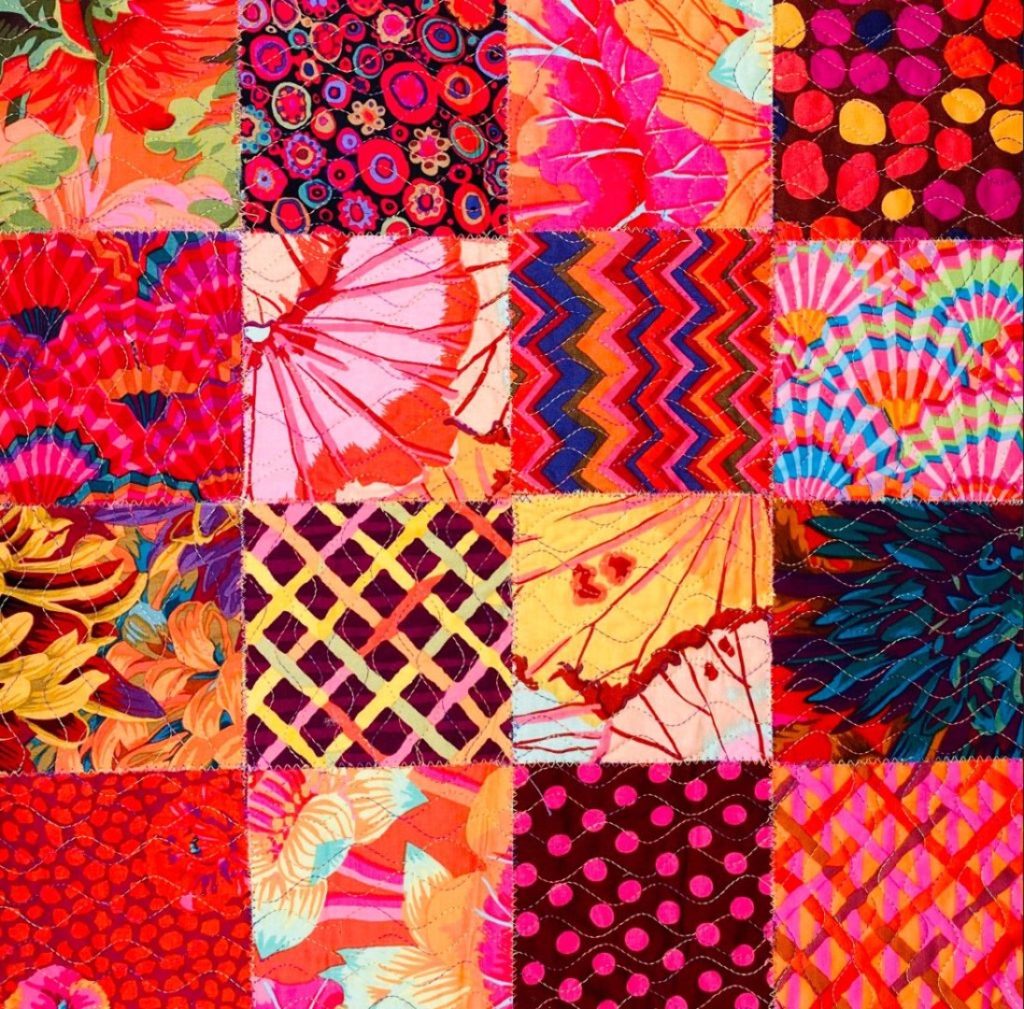
Ribbon Sashing
Position a ribbon on one of the vertical seams and stitch it in place using an edgestitch presser foot to stitch along each edge, covering the zigzag stitching. The ribbons should extend slightly beyond each edge of the the quilt top. Place the remaining ribbons as desired and continue stitching until all of the seams are covered. Trim the excess ribbons to be even with the edge of the quilt top.
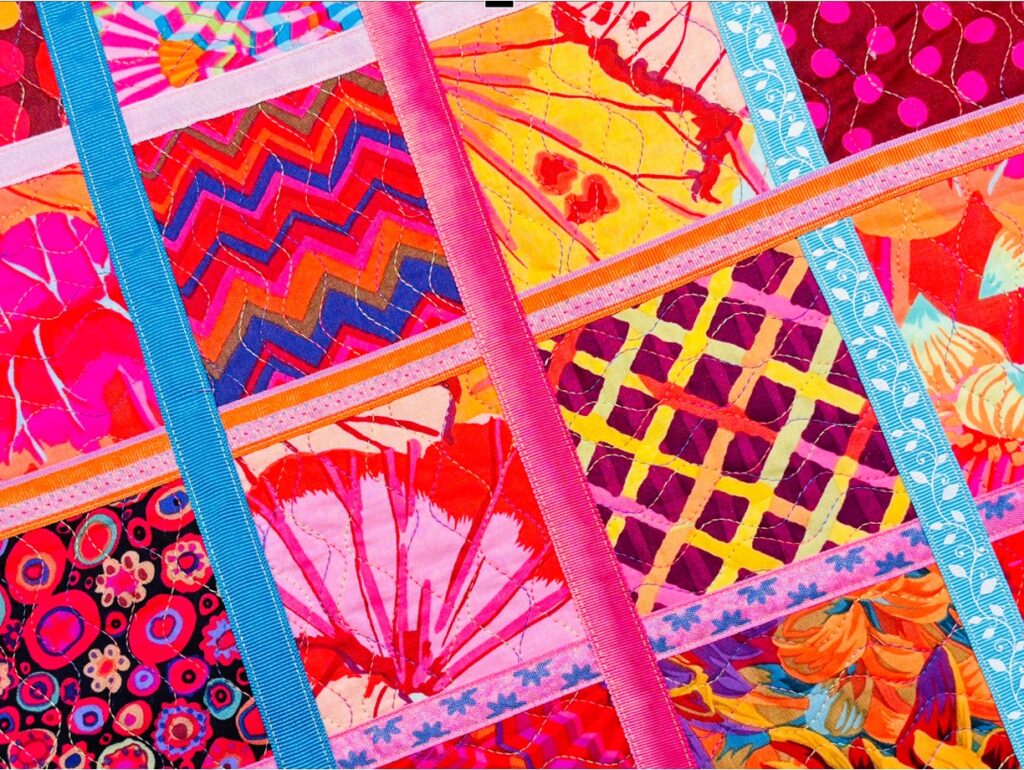
Added Embellishment
Stitch 1-2 narrow ribbons, trims, laces, and fibers on top of the ribbons as desired. Stack one on top of another or side by side as desired to create texture and add color to the quilt top.
Kaffe Fassett Quote – I love the way he thinks!
Print the quote on decorative paper and cut it out . I used a light color decorative cardstock and then used multiple colors of ink to add interest to the edges and random parts of the surface. Place it on a contrasting decorative paper using glue stick to hold it in place. Attach buttons under the quote as shown. Position the Quote as desired on the quilt. Stitch the corners of the quote, sewing through the layers of the cardstock to attach it to the quilt.
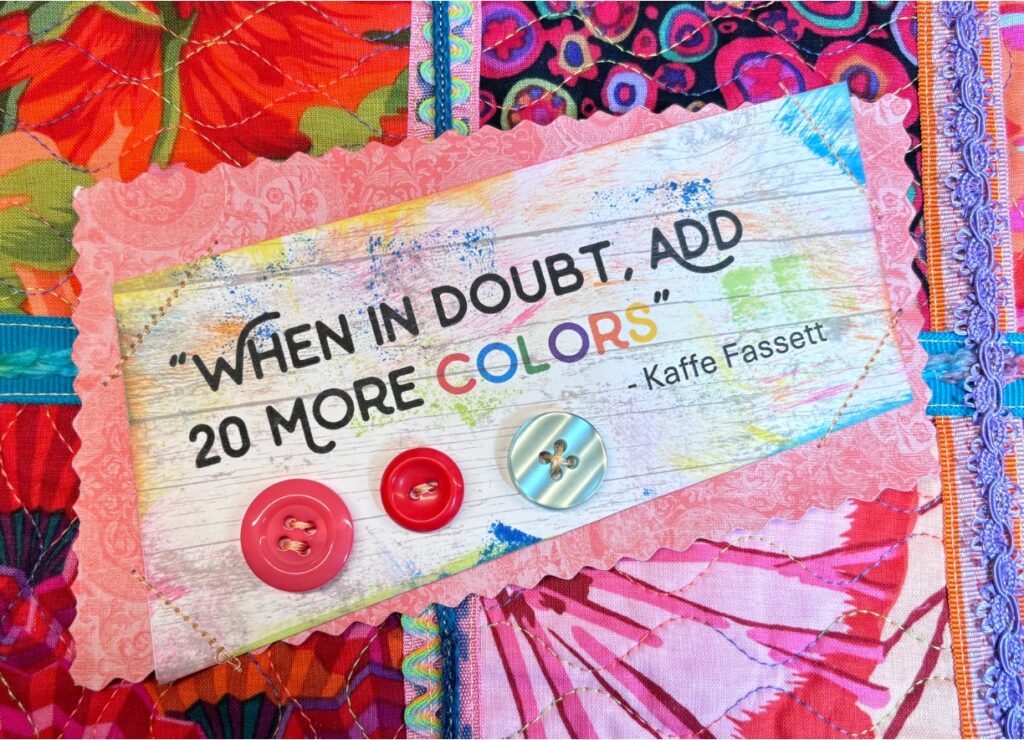
Adding Clusters
Next, add more texture and color to the quilt by creating and attaching Art Clusters. These are little stacks of fabric (stitched or not), paper, buttons, labels. etc. glued or stitched together. I added a few clusters to my quilt. Once you have made a few clusters, lay them place them quilt front and audition them the see what works for you. Leave at least ½” from the raw edges of the quilt as you will be attaching the binding after all of the embellishments are sewn or glued to the quilt.
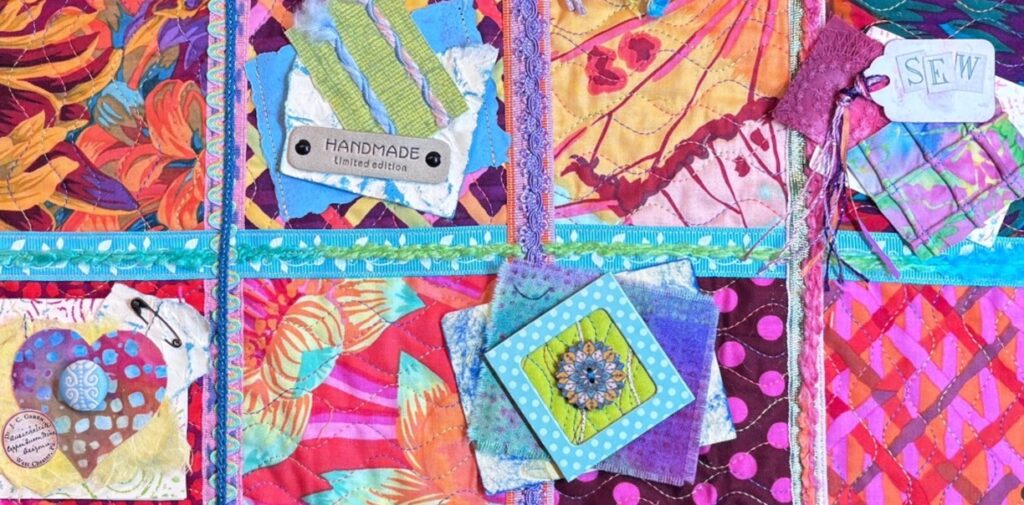
Click here to watch my video to see some examples of art clusters.
Download this FREE Printable that details the materials (you probably have most of them) you can use to make clusters to add color and texture to your art quilts.
One More Embellishment
The final embellishment is a fiber tassel. Fun to make, this tassel is also easy to put together. You just need about 10-12 pieces of narrow ribbons, trims, laces, embroidery floss, perle cotton, yarns, decorative threads, etc. You’ll also need about a bead with a ½” opening. The opening of the bead and the thickness of the fibers determine how many fibers you will need. Lay the fibers down and using a narrow ribbon or heavy thread, tie the bundle of fibers together, about ½” from the top. Wrap the upper end of the fibers with tape to make to stiffen it. Thread the taped end into the bead from the bottom. Pull it through until it is about 3/4″ above the bead. Remove the tape, then trim the upper edge if needed and the lower edge to the desired length. The one on the quilt is about 6″ long.
Click here to see my video tutorial for making a fiber tassel.
Quilt Backing
Place the wrong side of the backing behind the quilt top, and trim it to be the same size as the quilt top. Use temporary spray adhesive and/or clips to hold the layers together. Using an overlock foot and an overlock stitch to “seal” the edges. This makes it easier to attach the binding and wrap it around the raw edge.
Raw-Edge Binding
If you used a decorative cutter on one long edge of the binding strips, place the straight edge of one of the binding strips to one side edge of the back of the quilt, even with the raw edges. Stitch the binding to the quilt using a quarter inch seam allowance. From the back side of the quilt, press the binding away from the quilt. Wrap the binding strip snugly over the edge and onto the right side of the quilt. Stitch it in place using the desired stitch. I used the Running stitch (#3) on my BERNINA B 790 PRO with a Length of 1.75 mm and a Width of 6 mm.
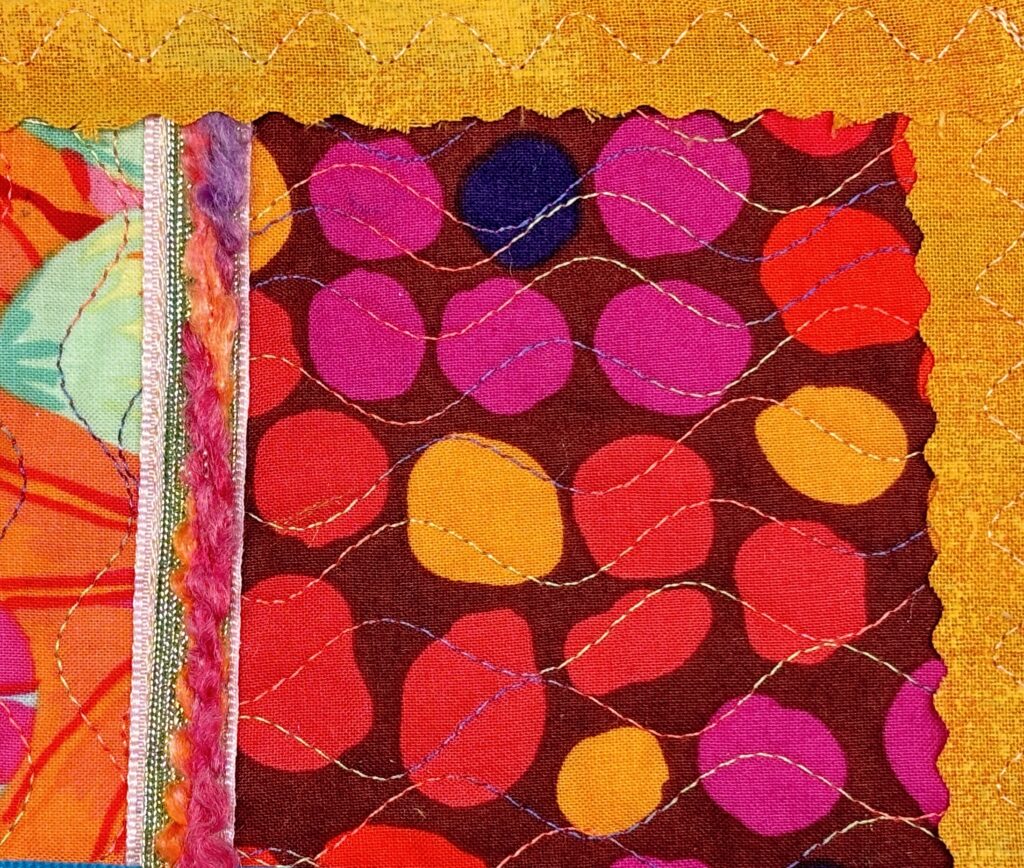
This was a very fun project for me and I love the look of it. It makes me happy to see all the color and texture so I will get enjoyment every time I look at it. So, what do you think? Is it over the top?, more than enough?, or just right. I’d love to hear your thoughts on this!
As always,


